CHCPOL003 Research: Evidence-Based Infection Control in Hospitals
VerifiedAdded on 2023/06/15
|7
|447
|276
Report
AI Summary
This report provides an overview of infection control in hospitals, emphasizing its importance in preventing healthcare-associated infections. It defines infection control, outlines its benefits, and describes the roles of the infection control team. The report also discusses chlorhexidine bathing as a method for reducing nosocomial infections, highlighting its broad-spectrum efficacy and antimicrobial activity. References to relevant studies and guidelines from organizations like the CDC and ESCMID are included to support the information presented. Desklib offers access to this and other solved assignments to aid student learning.
1 out of 7
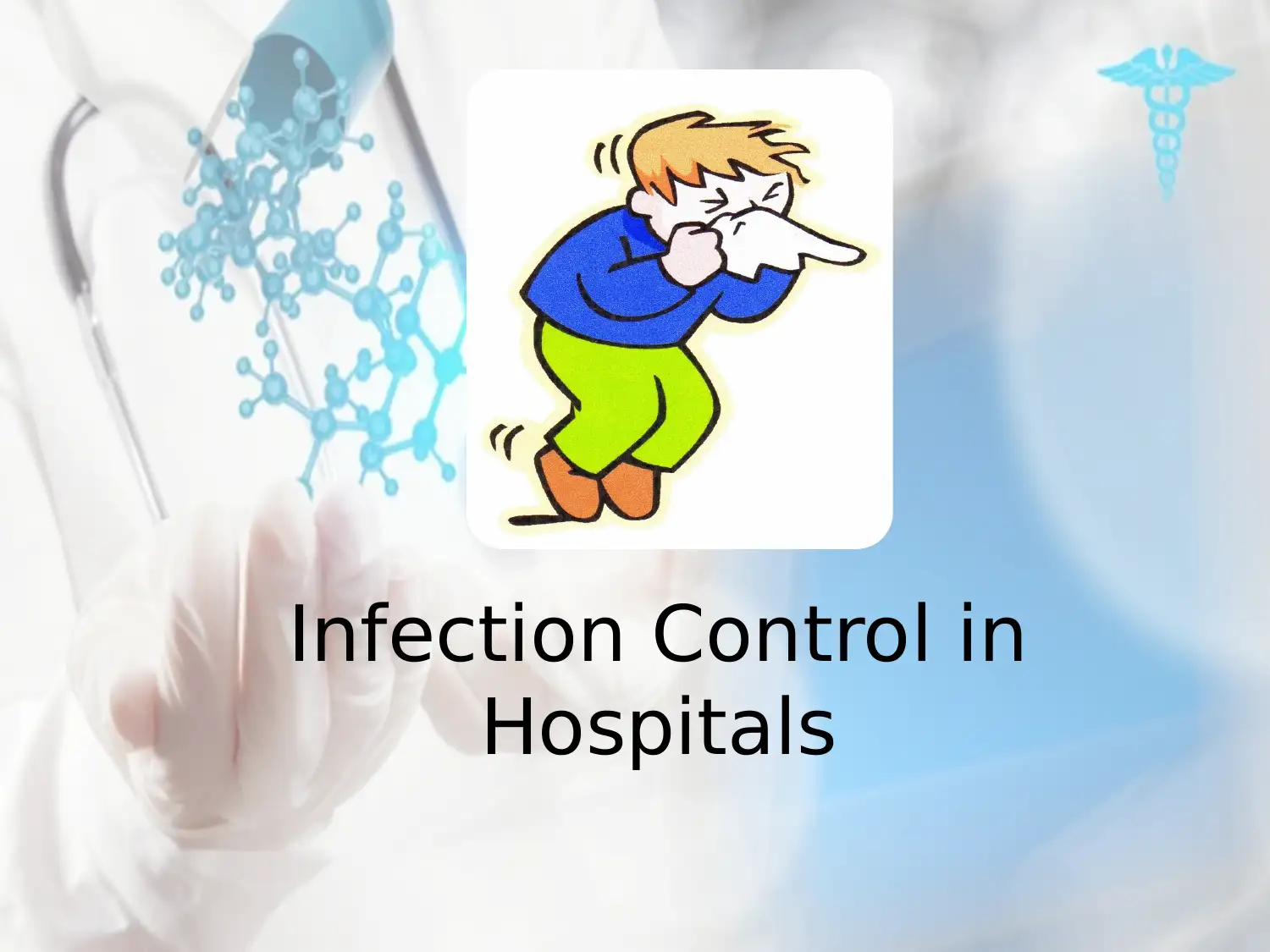
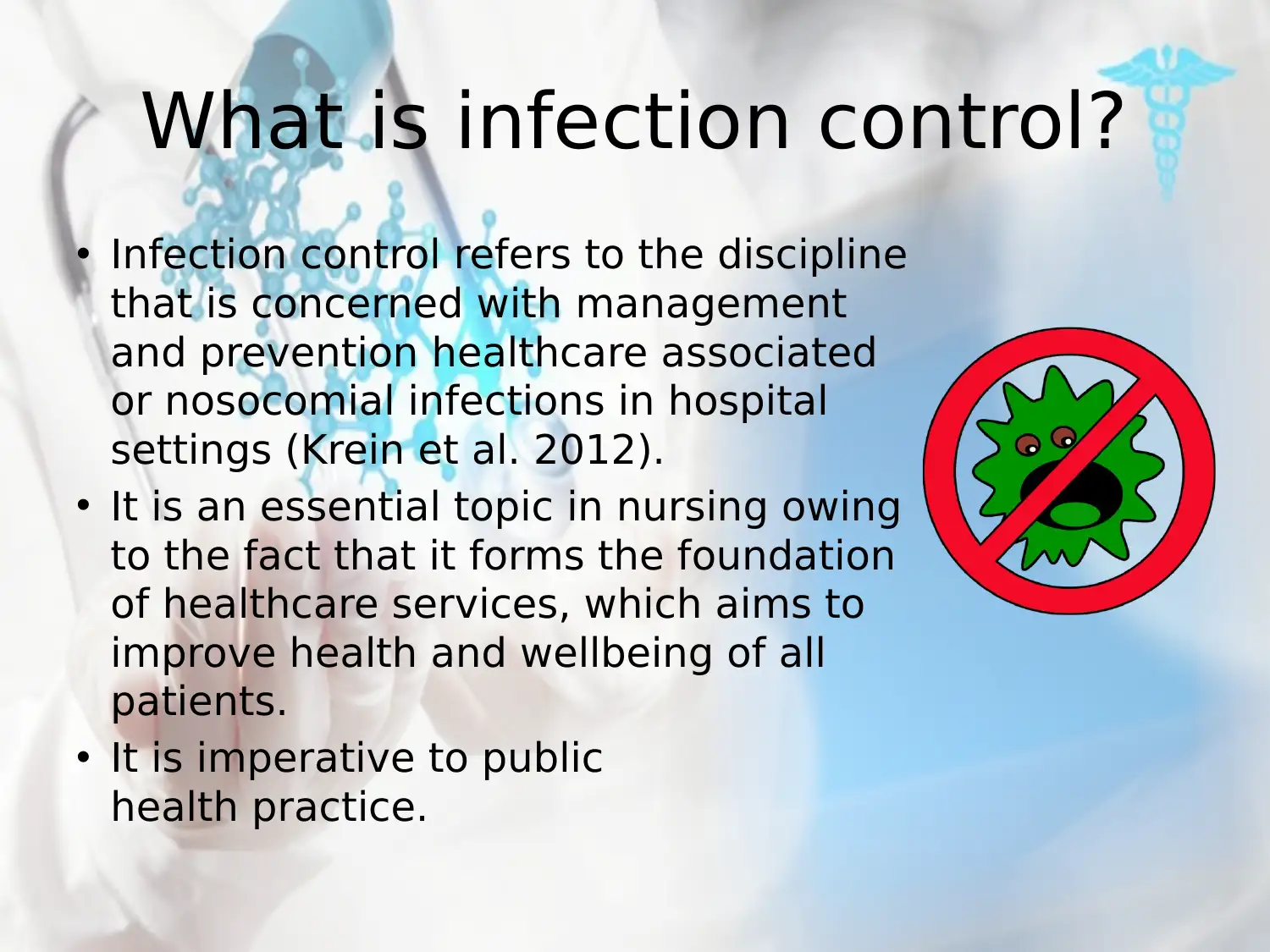
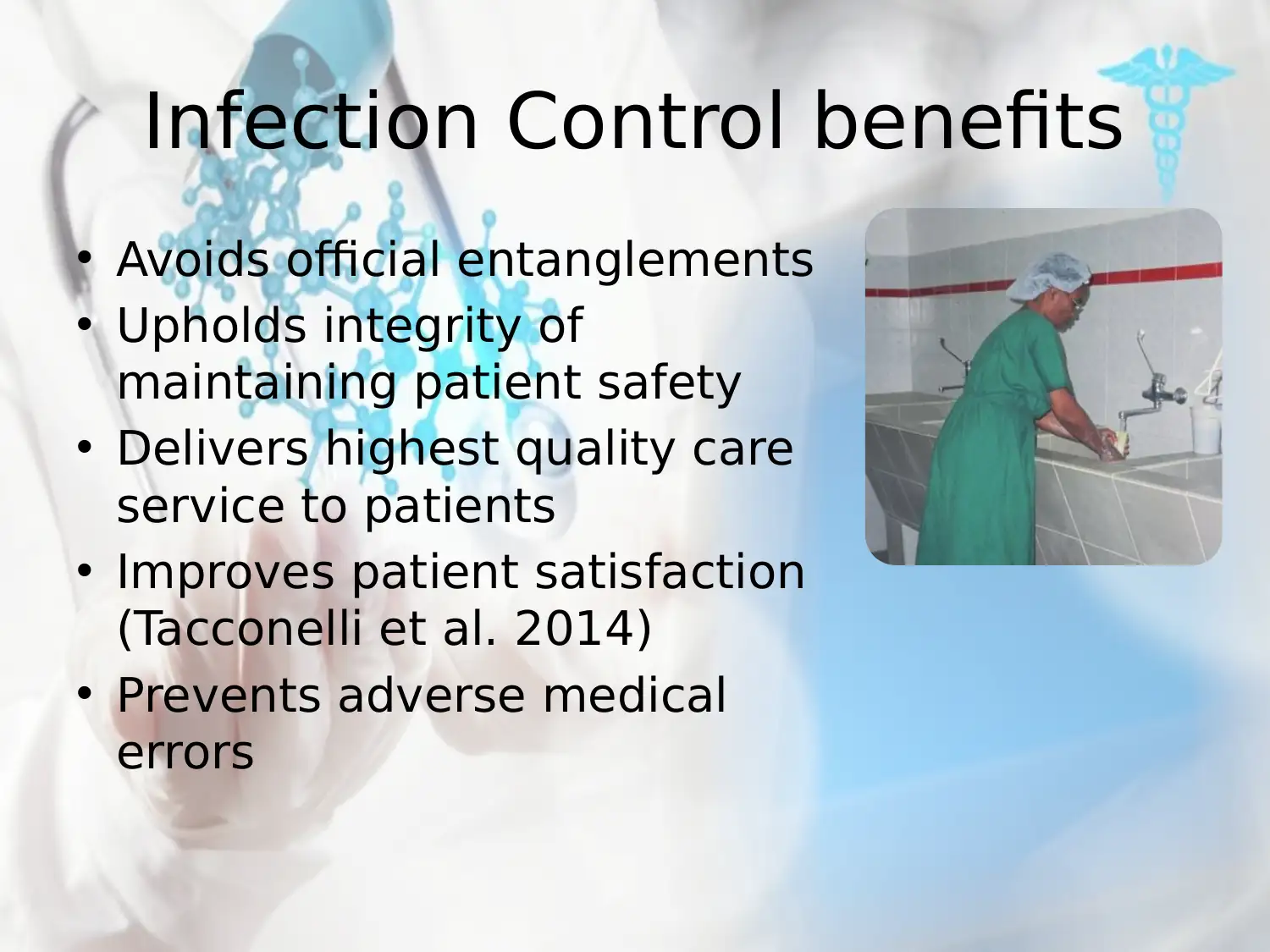

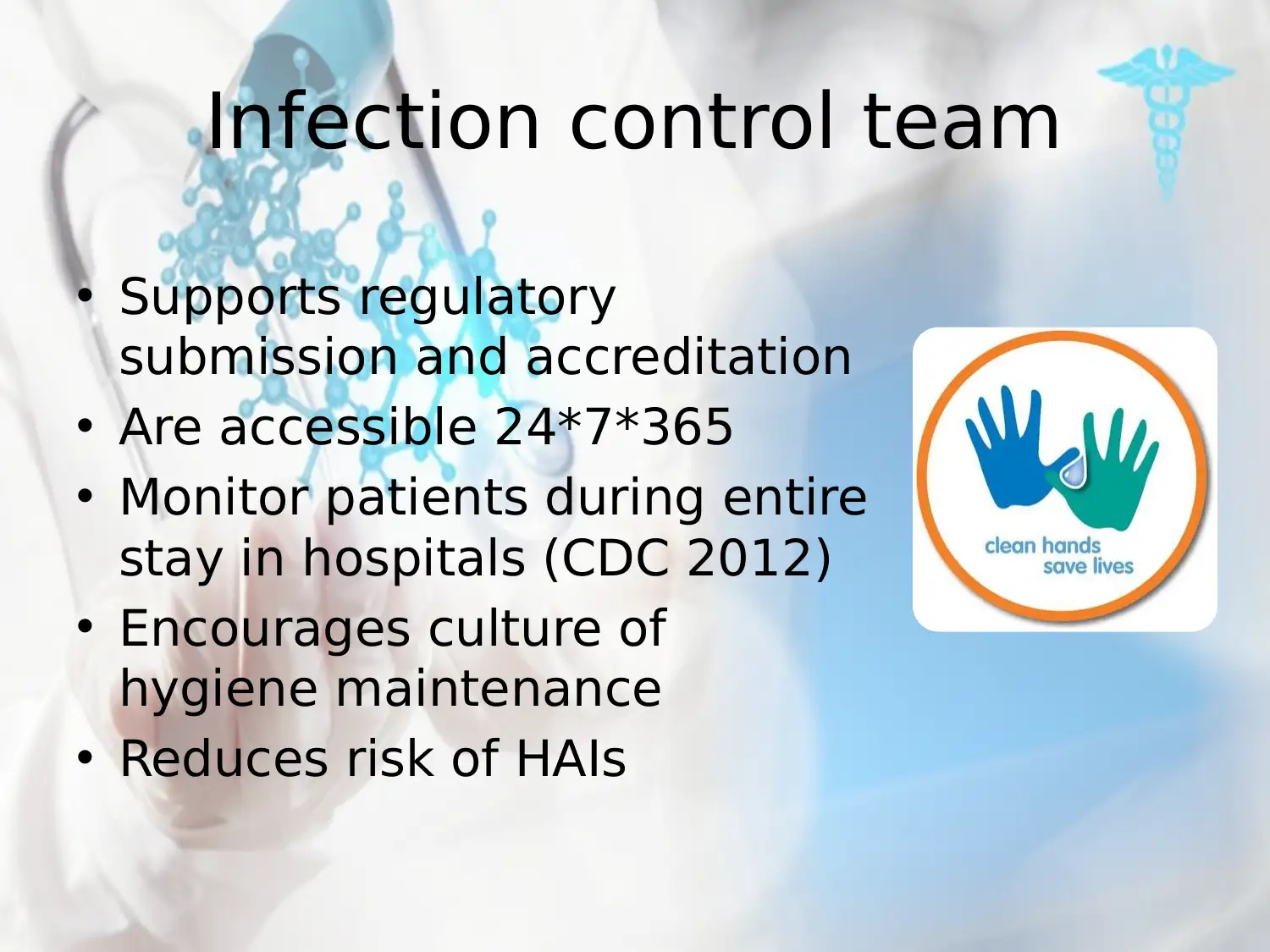
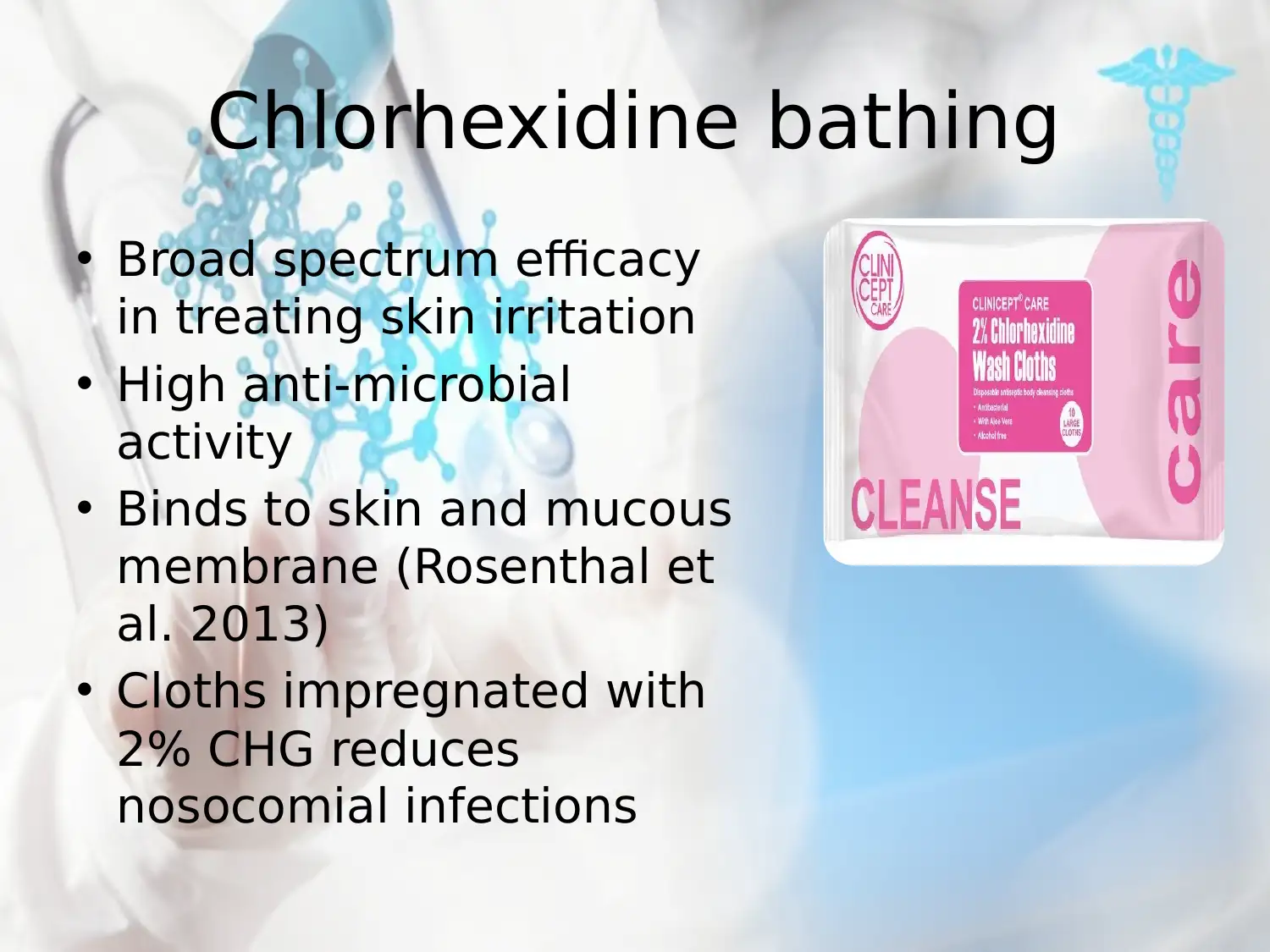
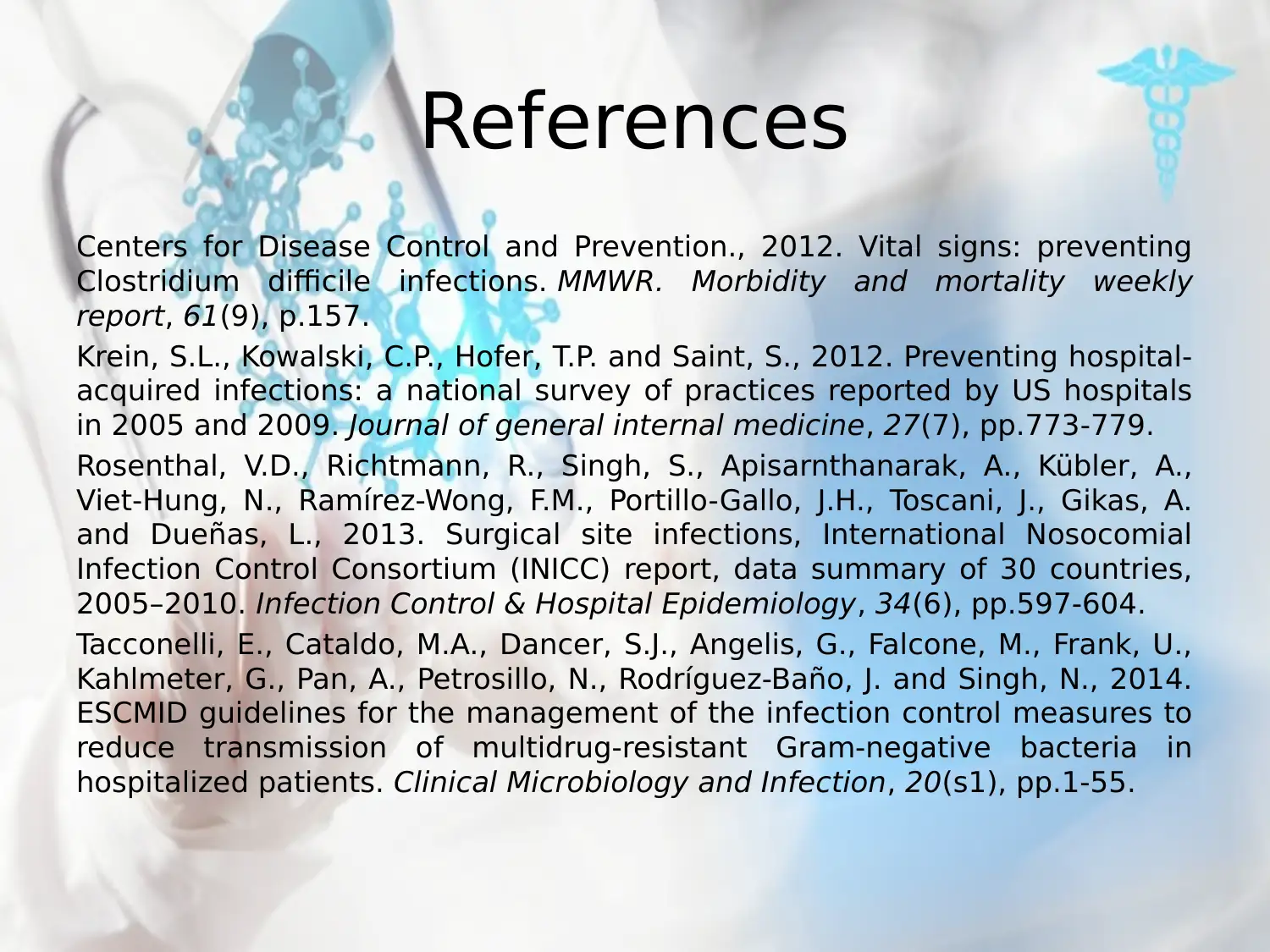







![[object Object]](/_next/static/media/star-bottom.7253800d.svg)